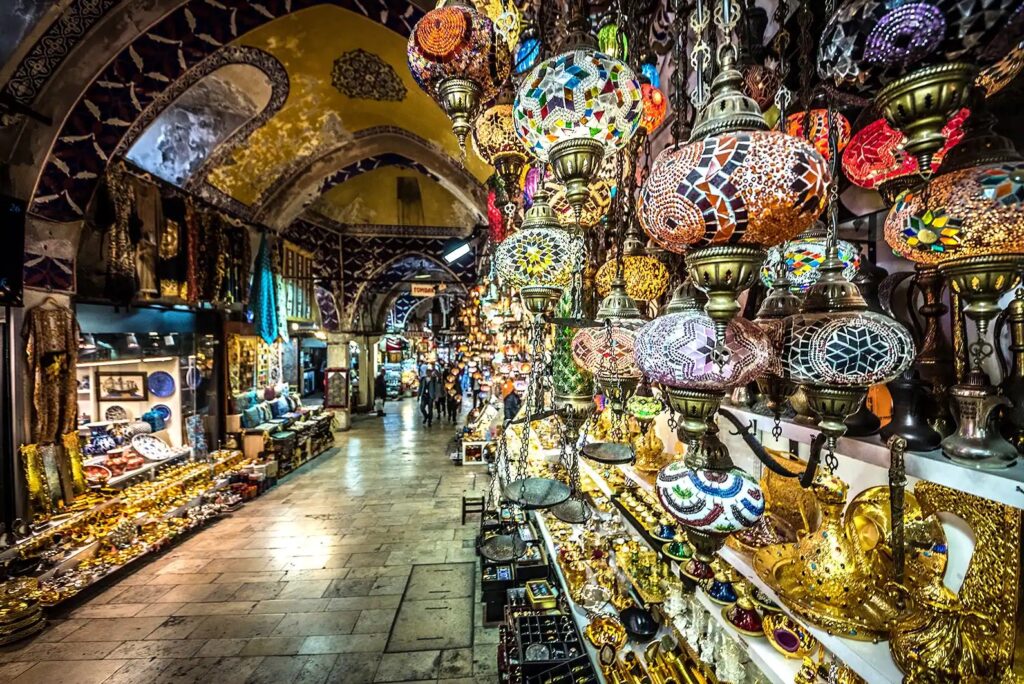Istanbul’s Grand Bazaar, which covers a huge area in the center city, was one of the first shopping malls ever built and it remains one of the greatest spectacles in the world, attracting up to 400,000 visitors each day. I spent a day at the Grand Bazaar and prowled through its labyrinthine vaults. I went into the high domed hall of the Cevahir Bedesten — where old coins, inlaid weapons, and mother-of-pearl mirrors are sold — I felt like I was taken back to the 14th century when the Grand Bazaar was initially constructed.
But when I ventured into the shops where the famed Turkish rugs were sold, a startlingly different thought came to me: The Grand Bazaar, which was built shortly after the arrival of the Ottoman Empire, has been putting Big Data to work for decades!
That may seem like an odd statement, but the way in which rug merchants at the Bazaar gather insight about customers in order to sell their goods is a microcosm of how retailers are applying Big Data for the same purpose. Upon entering the rug shops, the gregarious salespeople approached me with attention-getting openers:
“Welcome! Where are you visiting from?”
“I hope you are enjoying Istanbul. How long are you staying in our city?”
“Where are you staying at?”
Questions and answers
Such questions, so different than the generic “Can I help you?” that we are used to hear in many other stores, seem at first a clever way to stop people in their tracks, and capitalize on the sociable nature of travelers. And that is partly true. However, I saw a deeper reason behind the merchants’ approach.
The questions, far from being casual statements, were based on the merchants’ decades of experience of what type of people buy which type of rug. The city that someone is from or the hotel where someone stayed are strong indicators of their taste and income. By combining this with other visual cues like age, clothing, choice of watch and jewelry, brand of camera, and body language, the merchant can get very accurate insight about a total stranger! And he can do this in a matter of minutes, truly in real-time.
Honing in on predictive analysis
In my case the merchants were able to use this information to understand my context and to predict my likes and preference and then steer me to rugs that best fit me and my wife. And this is precisely what leading retailers do with Big Data: they gather diverse stores of information to truly understand the context of each customer interaction and then decide on the most appealing merchandize, the best price point or the right marketing offer. Within three or four questions, the rug merchants were able to dramatically improve their odds of showing me a rug I’d want to buy, because those three or four questions had been tested and vetted over years of experience with thousands of buyers similar to me.
In addition, the merchants combined the answers I gave them with other information — how old I was, what I looked liked, and so forth. In a way, this is similar to how retailers combine different data stores — like purchase history and weather patterns to make predictive analysis of what products would be of interest to particular groups of customers – or better yet to create a personalized shopping experienced for me.
Visiting the sprawling Bazaar can be intimidating. The merchants, trained by years of experience, have learned to make it a less stressful experience. Their friendly questions put me at ease, and they showed me to a seat covered in handsome Turkish rugs. They offered me tea — the perfect choice.
Like the Bazaar merchants, the savviest companies are using Big Data in their online and brick-and-mortar stores to design and deliver stress-free, pleasant and engaging shopping experiences. Big Data is often considered a complicated and nebulous topic. It’s defined by abstract vocabulary like “volume,” “velocity” and “variety” that can be hard to get a handle on. However, if you keep the Grand Bazaar in mind, you have an easy-to-grasp image of what Big Data really is: the intelligence gathering and processing of many granular data points and signals so you can identify customers’ personality, needs, and wants in real-time.
But it doesn’t stop there. Retail executives believe that Big Data can help them perform better across a wide range of key areas like monitoring product quality, shipments and predicting future product trends.
In my blog, I’ll discuss how modern companies are successfully using these same principles, and you’ll see surprising similarities to the approach used by the rug merchants at the 700-year-old Grand Bazaar.
